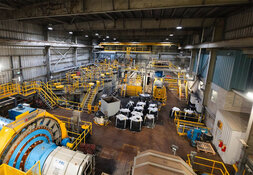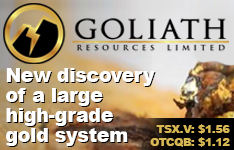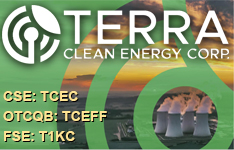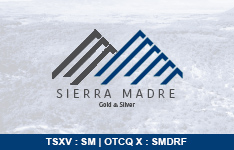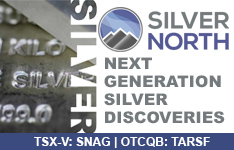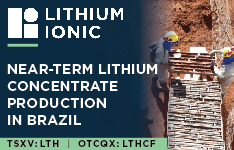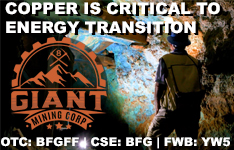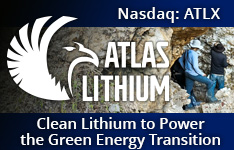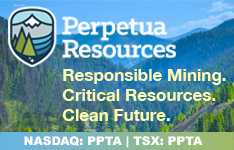Perpetua Resources Corp. (PPTA:TSX; PPTA:NASDAQ) has received the final federal permit required to move forward with construction of the Stibnite Gold Project in Idaho. The company announced on May 19 that the U.S. Army Corps of Engineers issued its Section 404 Clean Water Act permit, concluding an eight-year federal permitting process involving multiple agencies. With this permit in hand, Perpetua Resources will now focus on completing the remaining state-level permits and securing financing.
"Today's final federal permit from the Army Corps marks the culmination of eight years of permitting, scientific study, project refinement, and lots of hard work," said President and CEO Jon Cherry in the news release. The permit follows the January 2025 Final Record of Decision from the U.S. Forest Service and reflects the project's inclusion on the Federal Permitting Improvement Steering Council (FAST-41) dashboard. According to the company, more than 23,000 public comments were submitted in support of the project during the permitting process.
The Stibnite Gold Project aims to become one of the highest-grade open-pit gold mines in the United States, with approximately 4.8 million ounces in gold reserves. During the first four years of operations, the project is expected to produce about 450,000 ounces of gold annually. It also contains a 148-million-pound reserve of antimony, which is classified as a critical mineral by the U.S. government and used in defense, technology, and energy storage applications. China, which produced over half the world's antimony, imposed export restrictions in late 2024, increasing the urgency for domestic sources.
Perpetua's plan includes environmental restoration measures such as removing legacy mine waste and re-opening fish migration routes blocked for decades. The project site was historically mined, and Perpetua's approach is intended to improve water quality and increase access to fish habitat inaccessible for decades. The company has stated that it will maintain strict environmental oversight and adhere to modern reclamation standards throughout development.
Antimony and Gold Sector Overview
Antimony has emerged as a strategically critical mineral across multiple sectors, with growing demand tied to national defense, energy storage, and electronics manufacturing. According to a January report by Investing News Network, antimony was included on critical mineral lists by the United States, Canada, the European Union, the United Kingdom, and Australia, the EU, the UK, and Australia due to its importance in both industrial and defense applications. While traditionally used in fire retardants and lead-acid batteries, its role has expanded significantly in clean energy technologies, semiconductors, and munitions.
Melissa Pistilli of Investing News Network noted that "stringent building codes in response to climate change are also boosting demand for antimony in the flame retardant segment." In particular, antimony trioxide is widely used as a synergist in flame-retardant formulations for consumer electronics, textiles, and automotive components. Antimony also plays a role in emerging energy storage technologies, including molten salt batteries, which benefit from its ability to improve performance and stability at high temperatures.
Cantor Fitzgerald reiterated its Buy rating and US$22 price target on Perpetua's shares, representing a 72% return from the market price at the time of publication.
Military and defense use cases have become increasingly important. Pistilli reported that antimony is found in bullets, explosives, flares, laser sights, and protective gear, adding, "the military uses of Sb (antimony) are now the tail that wags the dog." According to Hallgarten & Company's Christopher Ecclestone, the metal's strategic value has made governments more likely to retain domestic supply rather than export it, creating potential constraints for western buyers.
Geopolitical developments have heightened supply chain concerns. As highlighted in the same Investing News Network report, China — home to the majority of global antimony production — implemented an export ban on antimony in late 2024 following escalating trade tensions with the United States. The move followed earlier restrictions imposed by the Biden administration on chip-related exports to China. Katusa Research warned that "with reserves shrinking and export restrictions tightening, the West faces a supply chain crisis."
This context has pushed the United States to pursue domestic production. On May 20, Fox News reported that the Trump administration supported the opening of a domestic antimony mine in Idaho to bolster national security and reduce dependence on Chinese supply. The outlet noted that the operation, which also includes gold production, is expected to "cut foreign reliance on that critical mineral by one-third." Interior Secretary Doug Burgum issued the mine's permit, stating it would play a key role in the administration's push for energy dominance and resource independence.
Meanwhile, the broader market has reflected these shifts. A Straits Research report projected that the global antimony market would grow from US$2.62 billion in 2025 to US$4.83 billion by 2033. The firm identified the primary growth drivers as rising demand for flame retardants, energy storage systems, and military-grade alloys. "Geopolitical tensions and supply chain disruptions have spotlighted the need for diversified sourcing," the report stated, with Western governments accelerating permitting and funding for domestic projects.
North America is forecasted to be the fastest-growing region, fueled by both regulatory support and increasing consumption. Straits Research noted that the U.S. Department of the Interior has prioritized antimony under the FAST-41 initiative, expediting permits for critical mineral projects. At the same time, the report highlighted the importance of antimony in the automotive and construction sectors, particularly through its integration into lead-acid batteries and flame-resistant materials.
Analysts Point to Federal Support and Significant Upside
On April 23, Mike Niehuser of ROTH Capital Partners reported that Perpetua's Stibnite project had been added to the U.S. Permitting Council's list of key mineral projects, initiatives, underscoring its strategic role in the national supply chain. Niehuser wrote, "Though Perpetua received a Final Record of Decision in January 2025, its inclusion on the list demonstrates the [Trump] Administration's support for the project currently moving through the EXIM (Export-Import Bank of the United States) financing process." He indicated that this designation was central to ROTH's investment thesis.
In the same report, Niehuser reaffirmed ROTH's Buy rating on Perpetua and maintained a US$19 price target, representing a 43% upside from the company's share price at the time. He also highlighted that Perpetua had already secured approximately US$75 million in federal funding and received a letter of intent from the U.S. EXIM Bank for potential debt financing of up to US$1.8 billion.
Niehuser stated that the company's formal EXIM application was expected to receive thorough consideration, writing, "The series of Executive Orders and inclusion on the Permitting Council's list suggest that EXIM should fully review Perpetua's formal application." He added that additional developments, including the anticipated Clean Water Act 404 permit and finalization of financing, could act as near-term catalysts for the company.
On May 20, Cantor Fitzgerald reaffirmed its positive outlook on Perpetua Resources following the company's receipt of the final federal permit required for construction of the Stibnite Gold Project in Idaho. Analyst Mike Kozak emphasized the significance of this milestone, stating that it concluded an eight-year permitting process involving multiple federal agencies. He noted that only two minor state-level permits remained, after which the project would be "shovel-ready."
Kozak highlighted Perpetua's strategic advantage, explaining that the company was expected to formally apply for government-supported project financing through the Export-Import Bank of the United States (EXIM) within days or weeks. He referenced the existing letter of interest from EXIM, dated April 8, 2024, which outlined potential debt financing of up to US$1.8 billion. The project's initial capital expenditure requirement was most recently updated on February 14, 2025, to US$2.2 billion.
Cantor Fitzgerald reiterated its Buy rating and US$22 price target on Perpetua's shares, representing a 72% return from the market price at the time of publication. The firm based its valuation on an unchanged target multiple of 0.8 times NAVPS at a 7.5% discount rate. According to Kozak, "This has a clear bias to the upside as we expect PPTA shares to re-rate higher toward intrinsic value (NAVPS) upon successfully completing project financing with EXIM."
He further described the Stibnite project as one of the largest gold projects in the United States and underscored the added value of the antimony by-product, which is classified as a critical mineral. Kozak concluded that Perpetua was well-positioned to attract a joint-venture partner on favorable terms, given the project's scale and strategic importance.
On Track Toward a Strategic Asset in the U.S. Gold Sector
Perpetua Resources has positioned the Stibnite Gold Project as a long-term contributor to national strategic mineral supply and energy transition goals. According to its March 2025 investor presentation, the project is expected to yield a 15-year mine life with an after-tax net present value of US$3.65 billion at a gold price of US$2,900 per ounce, assuming initial capital expenditures of US$2.2 billion. The company also estimates an after-tax internal rate of return of 27.1% and a payback period of 2.2 years based on spot prices.
The first four years of production are forecast to deliver an average of 463,000 ounces of gold annually at an all-in sustaining cost (AISC) of US$435 per ounce. The project also carries a valuable antimony by-product credit, contributing approximately US$220 per ounce in cost savings over the mine's life. Based on the 2024 U.S. Geological Survey summary, Perpetua expects the mine could supply approximately 35% of U.S. antimony demand during the first six years of operation.
The company has already received multiple federal support mechanisms, including a combined US$75 million in Defense Production Act and Department of Defense awards for permitting and construction readiness. It has also secured an indication of up to US$1.8 billion in financing from the Export-Import Bank of the United States, contingent upon final approvals and terms. Perpetua expects to finalize ancillary permits and formalize financing in the first half of 2025, with a construction decision targeted for later this year.
 Streetwise Ownership Overview*
Streetwise Ownership Overview*
Perpetua Resources Corp. (PPTA:TSX; PPTA:NASDAQ)
With a projected average AISC of US$756 over the full mine life and low strip ratios, the Stibnite Gold Project compares favorably to peer projects in North America. The company has also signed a supply agreement with Ambri Inc., a battery storage firm that uses antimony-based liquid metal technology, contingent on project development milestones. Perpetua continues to emphasize its dual role as a responsible mining operator and a critical contributor to national mineral independence.
Ownership and Share Structure
According to Refinitiv, management and insiders own approximately 0.50% of Perpetua.
Institutions own about 63.52%. Top institutional shareholders include Paulson & Co. with 35.08%, Sun Valley Gold LLC with 4.2%, Sprott Asset Management LP with 4.16%, Kopernik Global Investors LLC with 3.05% and Sprott Asset Management USA Inc. with 3.41%. The rest is in retail.
Perpetua has 70.61 million (70.61M) outstanding shares and 69.97M free float traded shares. Its market cap is CA$937.13M. Its 52-week range is CA$6.80–CA$19.72 per share.
| Want to be the first to know about interesting Gold investment ideas? Sign up to receive the FREE Streetwise Reports' newsletter. | Subscribe |
Important Disclosures:
- Perpetua Resources Corp. is a billboard sponsor of Streetwise Reports and pays SWR a monthly sponsorship fee between US$4,000 and US$5,000.
- James Guttman wrote this article for Streetwise Reports LLC and provides services to Streetwise Reports as an employee.
- This article does not constitute investment advice and is not a solicitation for any investment. Streetwise Reports does not render general or specific investment advice and the information on Streetwise Reports should not be considered a recommendation to buy or sell any security. Each reader is encouraged to consult with his or her personal financial adviser and perform their own comprehensive investment research. By opening this page, each reader accepts and agrees to Streetwise Reports' terms of use and full legal disclaimer. Streetwise Reports does not endorse or recommend the business, products, services or securities of any company.
For additional disclosures, please click here.






